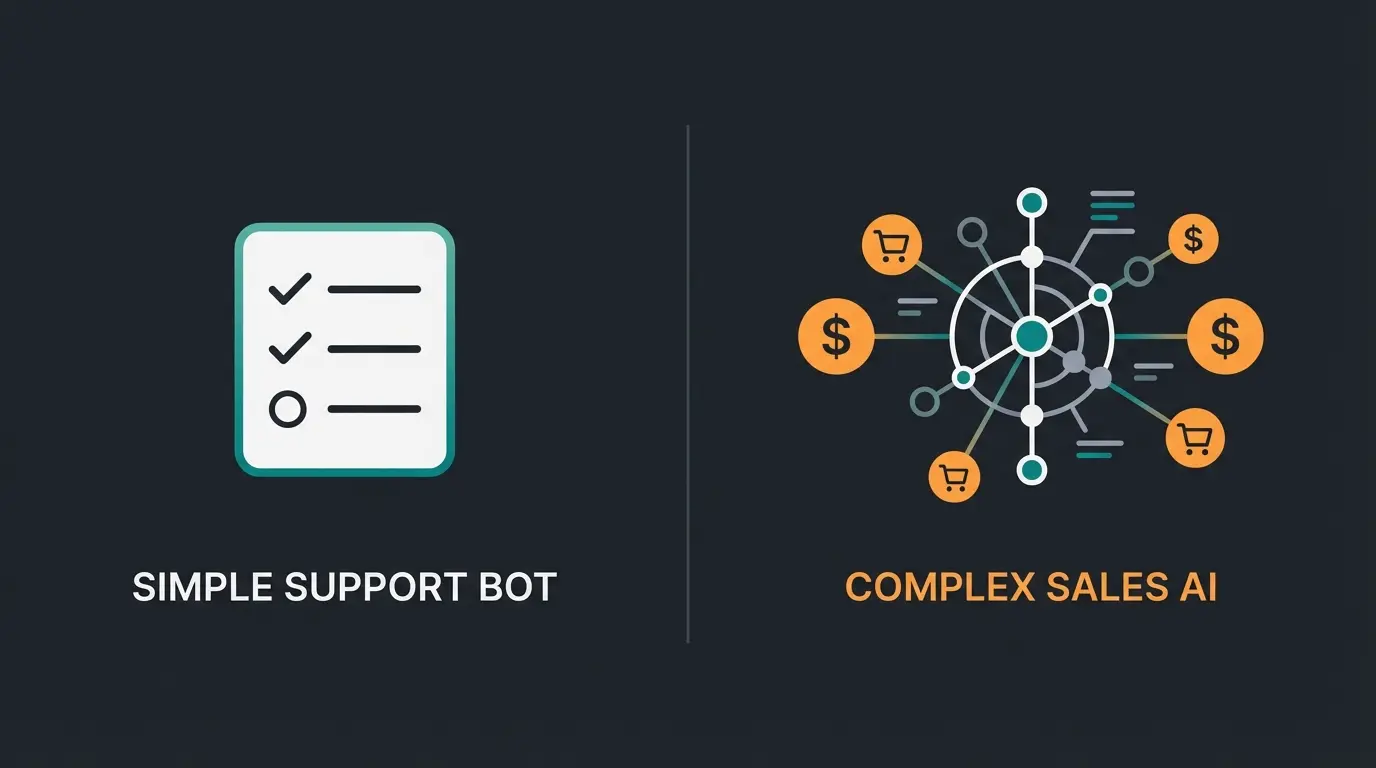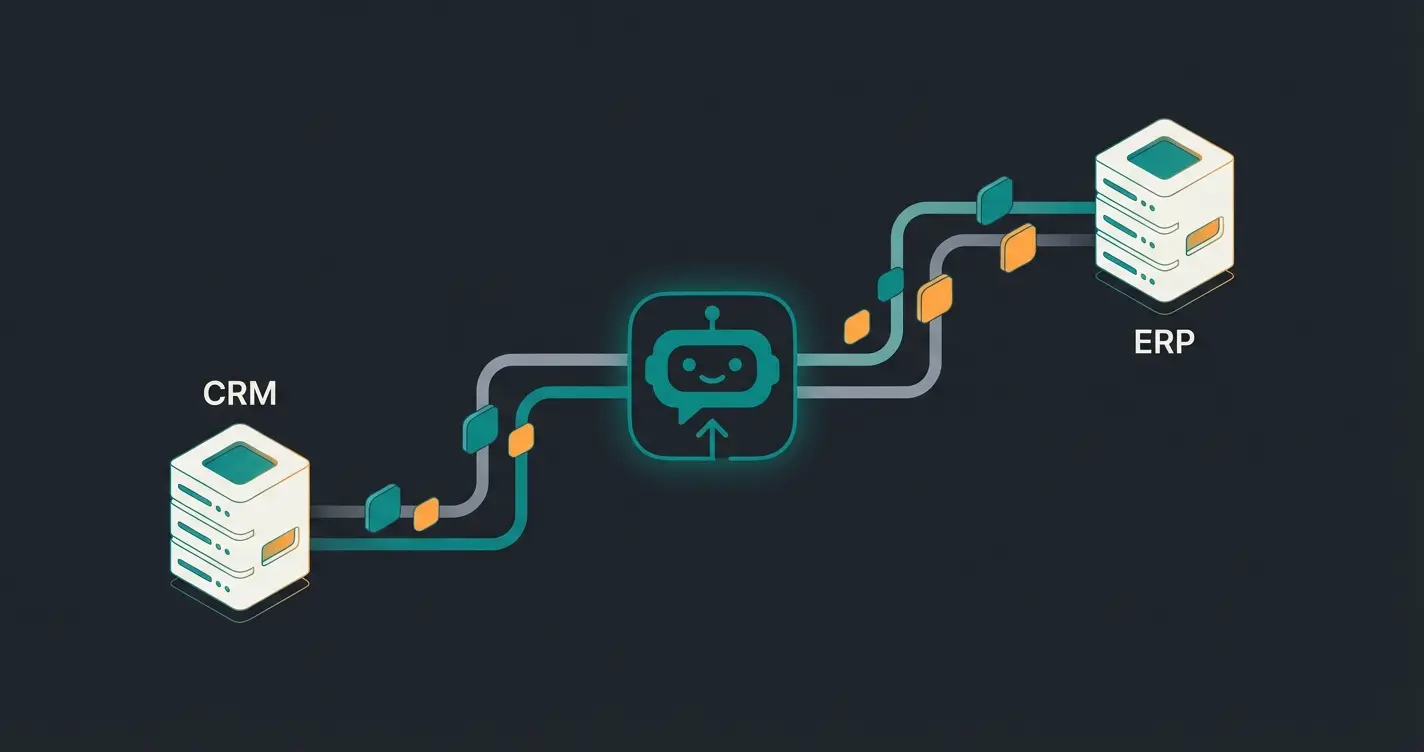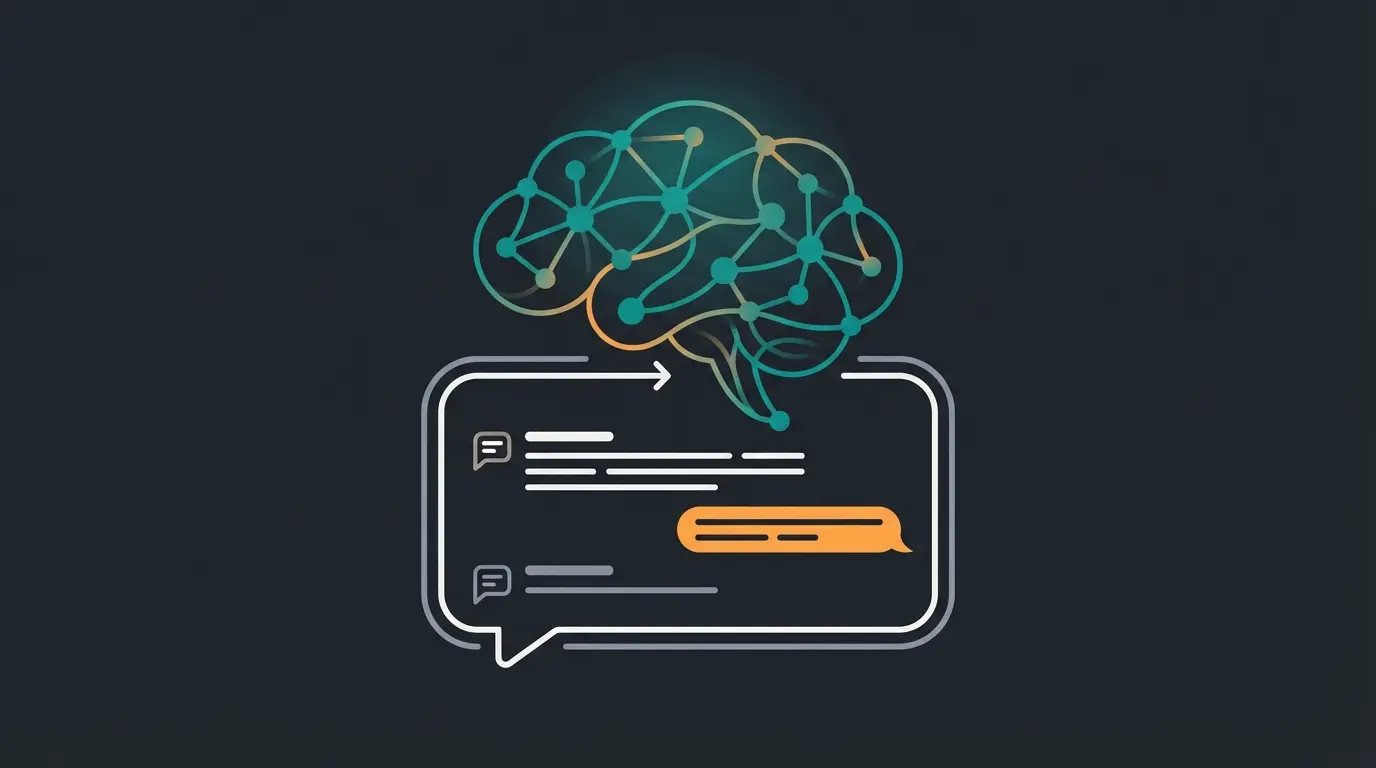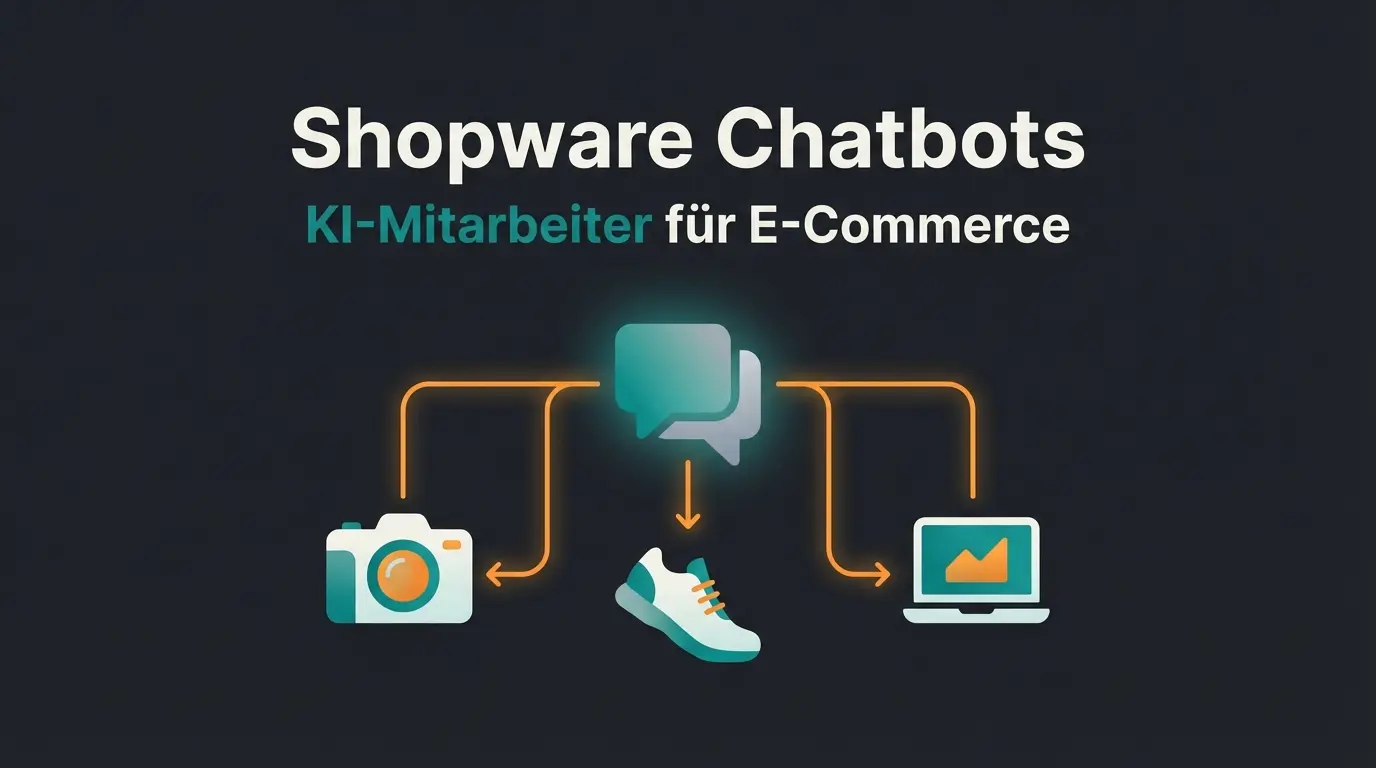AI Chatbot for Enterprise: Why Product Consultation Matters More Than Support (2025 Guide)
Discover how an AI Chatbot transforms from a simple FAQ tool into a proactive Digital Product Consultant. Learn about NLP, Chatbot Architecture, and driving ROI.
Introduction: What is an AI Chatbot really?
AI chatbots have fundamentally changed the way companies interact with their customers. These intelligent software applications simulate human conversations and offer support around the clock. But in 2025, the definition goes beyond simple support. What exactly makes up a modern AI chatbot?
An AI platform plays a crucial role in providing automated IT and HR support solutions. Such platforms, like the conversation-based AI software Workativ, handle employee inquiries autonomously, execute workflow automations, and support self-service functions.
An AI Chatbot is an advanced computer program that processes and understands natural language. Unlike rule-based chatbots that rely on predefined answers (click-flows), AI chatbots use complex algorithms and machine learning to interpret user inputs and generate appropriate, dynamic answers.
The development of chatbots has experienced remarkable progress in recent years. From simple, script-based systems, they have evolved into highly developed AI-controlled assistants capable of conducting contextual and personalized interactions.
The main components of a modern AI chatbot include:
- Language Understanding (NLU): Processing and interpretation of user inputs.
- Dialogue Management: Controlling the flow of conversation and persuasion logic.
- Knowledge Management: Accessing and utilizing information (PIM, CRM).
- Response Generation: Creating appropriate and context-related answers.
These components work seamlessly together to enable communication that is as natural and effective as possible. While AI chatbots find application in various areas, from customer service to healthcare, the biggest opportunity today lies in Digital Product Consultation.
The Paradigm Shift: From FAQ Bot to Product Consultant
Most companies still use chatbots strictly for service—answering "Where is my package?" or "How do I reset my password?". However, the true value of AI Dialog Management unlocks when the bot acts as a salesperson. This is the difference between a reactive agent and a proactive consultant.
| Feature | Service Bot (Standard) | Sales Bot (Consultant) |
|---|---|---|
| Primary Goal | Deflect Support Tickets | Increase Conversion Rate |
| Interaction Style | Reactive (Answers questions) | Proactive (Asks questions) |
| Key Integration | Knowledge Base / FAQ | PIM (Product Information) & Shop System |
| Success Metric | Time to Resolution | Average Order Value (AOV) |

Benefits of an AI Chatbot
An AI chatbot offers a multitude of advantages for companies and customers, extending far beyond simple availability.
One of the biggest advantages is 24/7 availability. AI chatbots are ready for use around the clock and can handle customer inquiries at any time without requiring a human customer service employee. This means that customers can receive support—or make purchase decisions—even outside of regular business hours, which significantly increases customer satisfaction.
Another important advantage is cost efficiency. By automating frequent inquiries, AI chatbots can reduce the workload of human employees and thus lower operating costs. This allows companies to use their resources more efficiently and focus on more complex tasks that require human intervention, such as closing high-ticket deals.
AI chatbots also contribute to the improvement of customer satisfaction. They can answer inquiries quickly and precisely, leading to a smoother and more pleasant customer experience. By using AI and machine learning, these chatbots are capable of giving personalized and context-related answers tailored to the individual needs of the customers.
A further advantage is scalability. AI chatbots can easily be adapted to the growing requirements of a company. Whether it is a small start-up or a large enterprise, AI chatbots can be scaled without problems to cope with an increasing number of customer inquiries during peak seasons like Black Friday.
Application Areas for AI Chatbots
AI chatbots are used in a variety of application areas and offer companies numerous opportunities to optimize their processes. While our focus is on commerce, it is helpful to see how versatile the technology is.
In Customer Service, AI chatbots are particularly valuable. They can answer frequently asked questions automatically and solve simple problems, relieving human employees. This leads to faster response times and an improved customer experience.
In Sales and E-Commerce, AI chatbots play a vital role. They can address potential customers, carry out targeted advertising campaigns, and even support the sales process. By analyzing customer data, they can give personalized recommendations and thus increase the conversion rate.
Another interesting area of application is Home Automation. AI chatbots can be integrated into smart home systems and take over the control of household appliances. They can, for example, control lights, heating, and security systems, improving comfort and energy efficiency in the household. This demonstrates the AI's ability to handle complex, state-based commands.
In the field of Education, AI chatbots can be used as learning aids. They can help students with their tasks, answer questions, and provide personalized learning content. This promotes interactive and individual learning tailored to the needs of each student.
Don't just answer questions—guide your customers to the right product. See how our AI Chatbot drives revenue.
Start Free TrialFundamental Architecture of an AI Chatbot
To build a bot that can actually consult on products rather than just chat, the architecture must be robust. The architecture of an AI chatbot is complex and consists of several layers that work together to enable smooth and intelligent interaction.
Input Processing
The first step in the functioning of an AI chatbot is input processing. Here, the message entered by the user is analyzed and prepared for further processing. This includes:
- Tokenization: Splitting the text into individual words or phrases (e.g., separating "Red Nike Shoes" into attributes).
- Normalization: Standardization of the text, e.g., conversion to lowercase.
- Stop Word Removal: Elimination of non-meaning-bearing words to focus on product keywords.
Intent Recognition
After input processing comes intent recognition. In this phase, the chatbot attempts to understand the user's intention or goal. Modern AI chatbots use advanced Natural Language Processing (NLP) techniques for this to capture the semantics and context of the input. This allows the chatbot to correctly interpret even complex and ambiguous inquiries, such as distinguishing between "I want to buy a laptop" (Purchase Intent) and "My laptop is broken" (Support Intent).
Dialogue Management
Dialogue management is the heart of the chatbot. It controls the flow of conversation and decides how the bot should react to the recognized intention. It takes into account:
- Context Management: Storing and using information from previous interactions (e.g., remembering the user asked for "Size 10" three messages ago).
- Dialogue Strategy: Determining the optimal course of conversation to achieve the user goal.
- Decision Making: Selecting the appropriate action or answer based on the current situation.
"I need running shoes for trails."
Extracts Entities: Category=Shoes, Activity=Running, Surface=Trail.
Queries database for products matching extracted attributes.
Returns top 3 matches with images and "Add to Cart" buttons.
Response Generation
The final step in the architecture of an AI chatbot is response generation. Here, the action selected by dialogue management is translated into a natural language answer. Advanced chatbots use techniques such as:
- Template-based Generation: Using predefined answer templates (good for factual product specs).
- Rule-based Generation: Creating answers based on specific rules.
- Neural Networks: Generating answers using Deep Learning models for a more conversational flair.
These components work together in a continuous cycle to enable a fluid and context-related conversation. The ability to learn from every interaction and adapt makes AI chatbots powerful tools in digital communication.
Connection to Backend Systems (Integration)
The integration of an AI chatbot with enterprise systems is a crucial step to fully exploit its performance. Modern AI chatbots are capable of communicating seamlessly with various backend systems and retrieving or updating data in real-time.
Integration with CRM and ERP Systems
One of the most important functions of an advanced AI chatbot is the connection to Customer Relationship Management (CRM) and Enterprise Resource Planning (ERP) systems. Open-source models like Llama 2 and HuggingChat are often used for this integration because they are customizable and accessible. This integration allows the chatbot to access comprehensive customer information and company data. As a result, the bot can give personalized answers and handle complex inquiries that require deeper insights into customer histories or company processes.
Real-time Data Retrieval and Update
AI chatbots can retrieve and update data in real-time by connecting to backend systems. This is particularly valuable in scenarios such as:
- Inventory Queries: The bot can check current stock levels and inform customers immediately about product availability.
- Order Tracking: Customers can query the status of their orders in real-time without human intervention being necessary.
- Updating Customer Data: The chatbot can make changes to customer profiles directly in the CRM system.

Multilingualism and Localization
In a globalized world, the ability of an AI chatbot to support multiple languages and consider cultural nuances is of great importance. Modern AI chatbots are capable of adapting to various linguistic and cultural contexts.
Techniques for Supporting Multiple Languages
AI chatbots use advanced technologies to offer multilingual support:
- Machine Translation: Integrated translation models allow the bot to understand and answer inputs in various languages.
- Speech Recognition: Advanced algorithms automatically identify the language used by the user and adapt the answer accordingly.
- Multilingual Training: Chatbots are trained with datasets in different languages to ensure natural understanding and idiomatic responses.
These techniques allow AI chatbots to switch seamlessly between different languages and thus reach a broader audience.
Cultural Adaptation of AI Responses
Besides pure language support, cultural adaptation is an essential aspect of localizing AI chatbots. This includes:
- Context-related Communication: The bot considers cultural norms and customs in its answers.
- Adaptation of Humor and Idioms: Jokes and linguistic phrases are adapted culturally to avoid misunderstandings.
- Consideration of Local Holidays and Customs: The chatbot can respond to regional specifics and adapt its communication accordingly.
Natural Language Processing (NLP) in Chatbots
Natural Language Processing (NLP) is a key technology that enables AI chatbots to understand and process human language. This ability forms the foundation for natural and effective communication between humans and machines. Below we look at the most important NLP components used in modern AI chatbots.
Tokenization and Parsing
Tokenization is the first step in processing natural language. Here, the input text is broken down into individual words or sentence parts, so-called tokens. Subsequently, parsing takes place, where the grammatical structure of the sentence is analyzed. These processes enable the chatbot to grasp the meaning and context of the user input.
Named Entity Recognition (NER)
Named Entity Recognition is an advanced NLP technique that allows AI chatbots to identify and classify important information such as names, places, dates, or product designations in a text. This ability is particularly valuable for personalized customer interactions and precise information extraction.
Sentiment Analysis
Sentiment analysis allows AI chatbots to recognize the emotional tonality of a message. This technique helps to understand the user's mood and react accordingly. For example, a chatbot can recognize if a customer is frustrated and adapt the communication accordingly or forward it to a human employee if necessary.
Context Understanding
One of the most demanding tasks for AI chatbots is context understanding. Modern NLP algorithms allow chatbots to retain and interpret context over multiple messages. This leads to more natural conversations, as the chatbot can refer to previous statements and process related information.
Context understanding is a crucial factor that distinguishes AI-supported Conversational AI from simple rule-based chatbots. It enables more complex and human-like interactions where the chatbot can follow the flow of conversation and react appropriately.
Machine Learning Components in Artificial Intelligence
Machine Learning plays a central role in the functioning of modern AI chatbots. This technology allows chatbots to learn from data and continuously improve their performance.
Training Models for Chatbots
AI chatbots are based on complex training models that process large amounts of data to understand and generate natural language. These models are trained using various techniques:
- Supervised Learning: The model is presented with example dialogues with correct answers, from which it learns.
- Unsupervised Learning: The model independently discovers patterns in unstructured data.
- Reinforcement Learning: The chatbot learns through interaction and feedback which answers are most effective.
Continuous Learning and Improvement
A decisive advantage of AI chatbots is their ability to learn continuously. By analyzing user interactions, they can constantly improve their performance:
- Feedback Loops: User reactions are collected and analyzed to improve the quality of answers.
- A/B Testing: Different answer versions are tested to find the most effective formulations.
- Real-time Adaptation: The chatbot adapts its communication strategy based on current interactions.
This continuous improvement allows AI chatbots to adapt to changing user requirements and optimize their performance over time. The combination of advanced NLP and Machine Learning makes modern AI chatbots powerful tools that revolutionize customer interaction and set new standards in digital communication.
Integration of Large Language Models (LLMs)
The integration of Large Language Models like GPT (Generative Pre-trained Transformer) has significantly expanded the capabilities of AI chatbots. These advanced models allow chatbots to conduct human-like conversations and better understand and answer complex inquiries.
Improvement of Language Understanding
Large language models like GPT significantly improve the language understanding of AI chatbots. They allow the bots to capture context and nuances in human language. This leads to more natural and fluid conversations between humans and machines. The IBM study on chatbots shows that modern AI chatbots can understand common language and complex inquiries.
Extended Response Generation
The integration of large language models also improves the ability of chatbots to generate coherent and context-related answers. They can summarize information from various sources and create tailored answers adapted to the specific needs of the user. According to the IT-Daily analysis on chatbot technology, modern chatbots use Natural Language Processing (NLP), machine learning, and deep learning to generate precise and relevant answers.

ROI & KPIs: When is an AI Chatbot Worth It?
The Technikum Wien Academy emphasizes that AI-based chatbots learn from every dialogue. But how does this translate to business value? The metric for success depends on whether you are building a support bot or a sales consultant.
For Support Bots, the key metric is Ticket Deflection. If 50% of queries are solved without a human, the bot is a success.
For Digital Product Consultants, the metrics must be sales-driven:
- Conversion Rate: Percentage of users who buy after chatting.
- Average Order Value (AOV): Does the bot successfully upsell (e.g., suggesting batteries with a toy)?
- Bounce Rate Reduction: Does the bot keep the user on the site longer?
AI Chatbots vs. Chatbots vs. Virtual Customer Service Agents
There are different types of chatbots that differ in their functionality and intelligence. A fundamental understanding of these differences is important to choose the right solution for specific requirements.
Chatbots (Rule-Based) are the simplest form and rely on pre-programmed answers. They follow fixed scripts and can only react to specific inputs. This type of chatbot is suitable for simple and frequently recurring tasks but offers no flexibility or adaptability.
AI Chatbots use artificial intelligence and machine learning to generate human-like answers. They are capable of understanding complex inquiries and giving context-related answers. Through continuous learning, they improve their performance over time and offer significantly more natural and effective communication.
Virtual Customer Service Agents are specialized AI bots developed for use in call centers or contact centers. They are trained to handle complex customer inquiries and can switch seamlessly between different communication channels. These bots offer high flexibility and can effectively support or even replace human employees.
Conclusion
AI chatbots are an effective solution for companies to handle their customer inquiries and improve customer satisfaction. By using artificial intelligence and machine learning, AI chatbots can deliver human-like answers to human inputs and significantly reduce costs for customer service.
However, the true potential for 2025 lies in shifting from pure support to active product consultation. It is important to identify the right application areas for AI chatbots—specifically in the sales funnel—and implement them accordingly to achieve the best possible results.
Costs vary significantly based on complexity. Simple rule-based bots can cost $50-$500/month, while enterprise AI solutions with PIM integration and custom NLP training often range from $2,000 to $10,000+ per month depending on volume and features.
A basic FAQ bot can be live in 2 weeks. A fully integrated 'Digital Product Consultant' that connects to your ERP and Shop system typically requires 6-12 weeks for data preparation, training, and testing.
Yes, if you choose the right provider. Look for solutions that host servers within the EU (Germany) and offer features like PII (Personally Identifiable Information) redaction before data is sent to LLMs.
With RAG (Retrieval Augmented Generation), hallucinations are minimized. The bot is restricted to answer only based on the factual data provided in your PIM or uploaded documents, rather than inventing facts.
Stop using chatbots just for FAQs. Start using them to sell. Schedule a consultation to see our AI Product Consultant architecture in action.
Get a Demo
